Where do all the native English-speaking residents live in Italy - and where do they avoid?
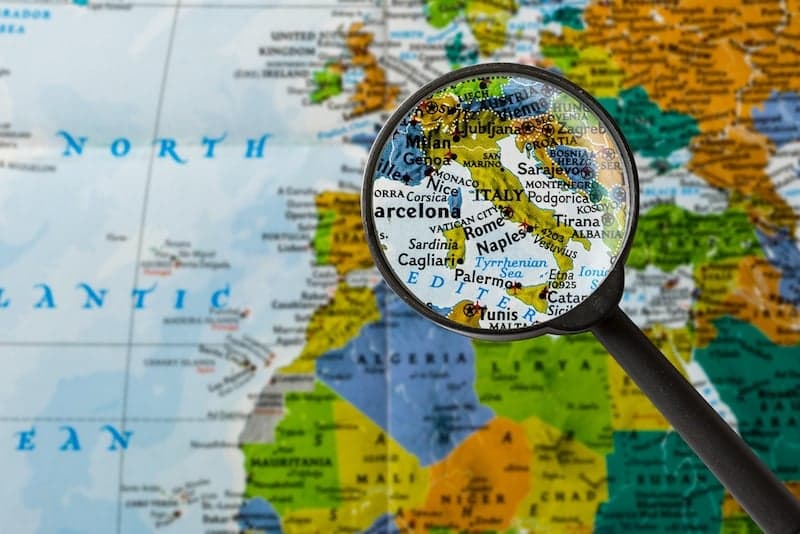
Ever feel like you're the only anglophone in the village? Or do you seem to hear English everywhere you go? Here are the stats on how many other English speakers share your part of Italy.
We took a look at the latest data available from national statistics office Istat to get a picture of Italy's anglophone residents.
A note on the numbers: they refer to people who have officially registered their residence with the local authorities, something all foreigners in Italy are supposed to do after three months living here (but that some don't). They don't include non-Italians who only spend part of the year in Italy, naturalized Italians, or dual citizens who've registered under their Italian passport.
And of course, there's no way to count all the many people from non-English-speaking countries who use the language too.
But with all those things in mind, here's what we know about native English speakers living in Italy.
Who are the English speakers in Italy?
As of January 1st, 2017, around 5.1 million non-Italians called Italy home, roughly 8.5 percent of the country's total population of 60.5 million.
Native English speakers account for only a small percentage of Italy's foreign population. According to the last census, English doesn't even feature in the top ten languages spoken by foreigners living in Italy, most of whom come from Romania (23 percent), Albania (9 percent), Morocco (8 percent), China (6 percent) and Ukraine (5 percent).
Going down the list, the first countries where English is an official language are the Philippines and India, whose citizens make up around 3 percent each of Italy's total foreign population. They're followed by Pakistan, Sri Lanka and Nigeria (around 2 percent each).
All other English-speaking countries have fewer than 50,000 nationals living in Italy each, each group representing less than 1 percent of Italy's foreign population.
The United Kingdom has just over 28,000 citizens in Italy, the United States has 15,000, Ireland has 2,900, Canada has 2,200, Australia 1,700, South Africa 600 and New Zealand just 300.
The least-represented English-speaking country we could find was tiny Tuvalu: just one of the Polynesian island's citizens lives in Italy.
Where do most English speakers live?
Foreigners of all kinds are drawn to three parts of Italy – the north-west, centre and north-east – and English speakers are no exception.
Let's take a closer look.
Lombardy is the most popular region
... by a long way, and presumably for the same reason it has drawn Italians from other parts of Italy for decades: jobs. The northern powerhouse is the only Italian region that's home to more than a million foreigners all on its own and, by our estimate, around 200,000 of them come from English-speaking countries.
Italy's economic capital, Milan, is the most popular part of Lombardy by far. The city has a large Filipino population (for context: more Filipinos live in Milan alone than the entire number of Brits and Americans in the whole of Italy combined), as well as several thousand Sri Lankans and Pakistanis.
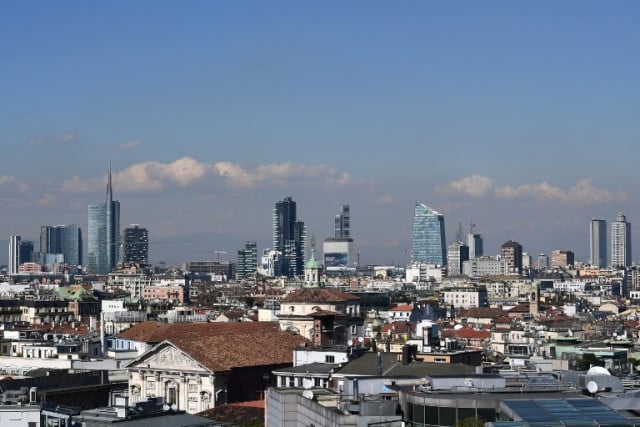
The Milan skyline. Photo: Miguel Medina/AFP
And roughly half of all the Brits, Americans, Irish people, Canadians, Australians, South Africans and New Zealanders in Lombardy live in Milan, though the neighbouring province of Monza Brianza, within commuting distance of the big city, is also popular.
Industrial Brescia attracts a lot of English-speaking foreigners too, especially Indians and Pakistanis.
But Lombardy's picturesque lakeside areas are also a big draw. Como and Varese are popular choices for Brits, Americans and Irish people (including, famously, actor George Clooney).
Rome is the most popular city
The capital might not have Milan's slick economy, but its tourism industry, large institutions and cultural cachet still make it the single top city for foreigners in Italy.

Blowing bubbles in central Rome. Photo: Alberto Pizzoli/AFP
While immigrants from developing countries tend to spread more equally across the north-west, north-east and centre of Italy, immigrants from wealthy countries are disproportionately concentrated in Rome.
The capital is the top destination by far for incoming Brits (around 13 percent of whom choose Rome as their Italian home), Americans (18 percent), Irish people (21 percent), Canadians (18 percent), Australians (14 percent), South Africans (13 percent) and New Zealanders (16 percent).
English-speakers love Tuscany
If they're not in Rome and Milan, English speakers tend to be fairly widely scattered across Italy. But one trend that emerges is that people from richer anglophone countries are noticeably drawn to Tuscany.
Call it the Under the Tuscan Sun effect or just the natural consequence of the region's gorgeous landscapes, great cuisine and charming villas, but Tuscany is the third choice after Lazio or Lombardy for Brits, Americans, Irish people, Canadians, Australians and South Africans (New Zealanders actually prefer Veneto, but they're the outliers).
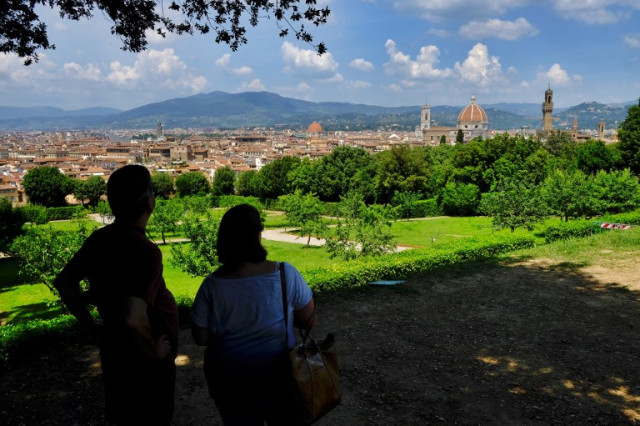
Admiring the view from Florence's Boboli Gardens. Photo: Andreas Solaro/AFP
Around 6,700 people from these countries currently live in Tuscany, more than half of them from the UK alone. Brits tend to spread out across the region, with a few hundred in each province, but Americans flock to Florence: US citizens total more than 1,100 there, making it one of the few places in Italy where Americans outnumber Brits.
While Florence is the most popular province overall, Lucca comes a close second, especially for Brits.
Brits prefer Perugia
If Florence is the dream destination for Americans, UK citizens have built quite a community in Perugia. Just over 1,000 Brits have made the Umbrian province their home, making it a slightly more popular choice than Florence.
In fact Perugia – which includes Assisi, Spoleto and other well-visited towns as well as the walled city of the same name – is the third most popular province for Brits after Rome and Milan. And given how much smaller Perugia's population is than either of those two metropoles, its British presence is that much more striking.
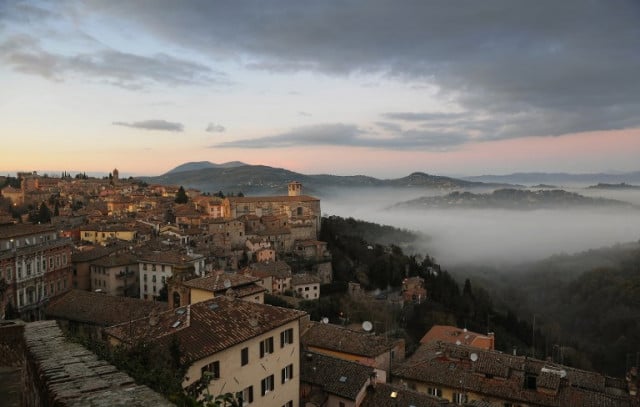
Picturesque Perugia. Photo: Alberto Pizzoli/AFP
Where do English speakers overlook?
The single province where you're least likely to hear English is the Aosta Valley, the small autonomous region in the far north-west. That's not entirely surprising, since it's Italy's least populous region and where the few residents they have are the most spread out. There's plenty to recommend it, though, not least Italy's highest peaks, hearty Alpine food, proximity to France and Switzerland, and some stunning mountaintop castles.
The other widely overlooked region is Molise, a place that even Italians tend to forget. That said, Americans and Canadians have started making inroads there: to give you an idea, the central region's US residents number over 150, compared to just 63 Brits, seven Australians and three (three!) Irish people. We've said it before and we'll say it again: Molise is one of Italy's best kept secrets.
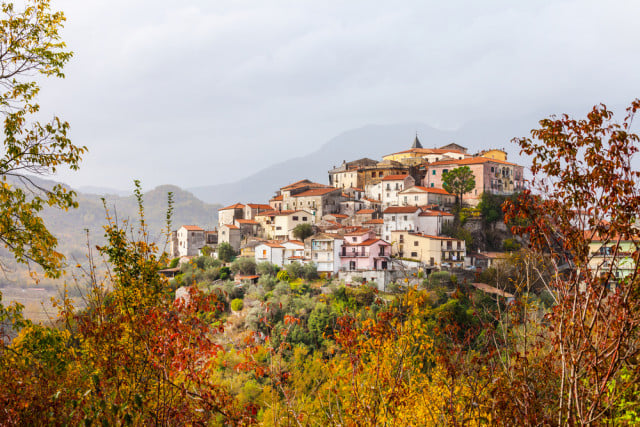
Colli al Volturno, Molise. Photo: DepositPhotos
Other areas where anglophones are sparse include Basilicata, the poor but scenic southern region on the instep of Italy's boot; Trentino and South Tyrol, the autonomous provinces on the border with Austria that are consistently rated some of Italy's best places to live; and Calabria, another southern region so plagued by poverty, organized crime and depopulation that the government is considering offering pensioners tax breaks to retire there.
And even in regions that are firmly on the English-speaking expat's radar, there are plenty of provinces that tend to go unnoticed: more or less anywhere in Sardinia outside Cagliari, the centre of Sicily as opposed to its coast, Sondrio in the heart of Lombardy's Alps, or Prato just north of Florence.
READ ALSO: Ten things to know before moving to Italy

Photo: Alberto Pizzoli/AFP
Comments (1)
See Also
We took a look at the latest data available from national statistics office Istat to get a picture of Italy's anglophone residents.
A note on the numbers: they refer to people who have officially registered their residence with the local authorities, something all foreigners in Italy are supposed to do after three months living here (but that some don't). They don't include non-Italians who only spend part of the year in Italy, naturalized Italians, or dual citizens who've registered under their Italian passport.
And of course, there's no way to count all the many people from non-English-speaking countries who use the language too.
But with all those things in mind, here's what we know about native English speakers living in Italy.
Who are the English speakers in Italy?
As of January 1st, 2017, around 5.1 million non-Italians called Italy home, roughly 8.5 percent of the country's total population of 60.5 million.
Native English speakers account for only a small percentage of Italy's foreign population. According to the last census, English doesn't even feature in the top ten languages spoken by foreigners living in Italy, most of whom come from Romania (23 percent), Albania (9 percent), Morocco (8 percent), China (6 percent) and Ukraine (5 percent).
Going down the list, the first countries where English is an official language are the Philippines and India, whose citizens make up around 3 percent each of Italy's total foreign population. They're followed by Pakistan, Sri Lanka and Nigeria (around 2 percent each).
All other English-speaking countries have fewer than 50,000 nationals living in Italy each, each group representing less than 1 percent of Italy's foreign population.
The United Kingdom has just over 28,000 citizens in Italy, the United States has 15,000, Ireland has 2,900, Canada has 2,200, Australia 1,700, South Africa 600 and New Zealand just 300.
The least-represented English-speaking country we could find was tiny Tuvalu: just one of the Polynesian island's citizens lives in Italy.
Where do most English speakers live?
Foreigners of all kinds are drawn to three parts of Italy – the north-west, centre and north-east – and English speakers are no exception.
Let's take a closer look.
Lombardy is the most popular region
... by a long way, and presumably for the same reason it has drawn Italians from other parts of Italy for decades: jobs. The northern powerhouse is the only Italian region that's home to more than a million foreigners all on its own and, by our estimate, around 200,000 of them come from English-speaking countries.
Italy's economic capital, Milan, is the most popular part of Lombardy by far. The city has a large Filipino population (for context: more Filipinos live in Milan alone than the entire number of Brits and Americans in the whole of Italy combined), as well as several thousand Sri Lankans and Pakistanis.

The Milan skyline. Photo: Miguel Medina/AFP
And roughly half of all the Brits, Americans, Irish people, Canadians, Australians, South Africans and New Zealanders in Lombardy live in Milan, though the neighbouring province of Monza Brianza, within commuting distance of the big city, is also popular.
Industrial Brescia attracts a lot of English-speaking foreigners too, especially Indians and Pakistanis.
But Lombardy's picturesque lakeside areas are also a big draw. Como and Varese are popular choices for Brits, Americans and Irish people (including, famously, actor George Clooney).
Rome is the most popular city
The capital might not have Milan's slick economy, but its tourism industry, large institutions and cultural cachet still make it the single top city for foreigners in Italy.

Blowing bubbles in central Rome. Photo: Alberto Pizzoli/AFP
While immigrants from developing countries tend to spread more equally across the north-west, north-east and centre of Italy, immigrants from wealthy countries are disproportionately concentrated in Rome.
The capital is the top destination by far for incoming Brits (around 13 percent of whom choose Rome as their Italian home), Americans (18 percent), Irish people (21 percent), Canadians (18 percent), Australians (14 percent), South Africans (13 percent) and New Zealanders (16 percent).
English-speakers love Tuscany
If they're not in Rome and Milan, English speakers tend to be fairly widely scattered across Italy. But one trend that emerges is that people from richer anglophone countries are noticeably drawn to Tuscany.
Call it the Under the Tuscan Sun effect or just the natural consequence of the region's gorgeous landscapes, great cuisine and charming villas, but Tuscany is the third choice after Lazio or Lombardy for Brits, Americans, Irish people, Canadians, Australians and South Africans (New Zealanders actually prefer Veneto, but they're the outliers).

Admiring the view from Florence's Boboli Gardens. Photo: Andreas Solaro/AFP
Around 6,700 people from these countries currently live in Tuscany, more than half of them from the UK alone. Brits tend to spread out across the region, with a few hundred in each province, but Americans flock to Florence: US citizens total more than 1,100 there, making it one of the few places in Italy where Americans outnumber Brits.
While Florence is the most popular province overall, Lucca comes a close second, especially for Brits.
Brits prefer Perugia
If Florence is the dream destination for Americans, UK citizens have built quite a community in Perugia. Just over 1,000 Brits have made the Umbrian province their home, making it a slightly more popular choice than Florence.
In fact Perugia – which includes Assisi, Spoleto and other well-visited towns as well as the walled city of the same name – is the third most popular province for Brits after Rome and Milan. And given how much smaller Perugia's population is than either of those two metropoles, its British presence is that much more striking.

Picturesque Perugia. Photo: Alberto Pizzoli/AFP
Where do English speakers overlook?
The single province where you're least likely to hear English is the Aosta Valley, the small autonomous region in the far north-west. That's not entirely surprising, since it's Italy's least populous region and where the few residents they have are the most spread out. There's plenty to recommend it, though, not least Italy's highest peaks, hearty Alpine food, proximity to France and Switzerland, and some stunning mountaintop castles.
The other widely overlooked region is Molise, a place that even Italians tend to forget. That said, Americans and Canadians have started making inroads there: to give you an idea, the central region's US residents number over 150, compared to just 63 Brits, seven Australians and three (three!) Irish people. We've said it before and we'll say it again: Molise is one of Italy's best kept secrets.

Colli al Volturno, Molise. Photo: DepositPhotos
Other areas where anglophones are sparse include Basilicata, the poor but scenic southern region on the instep of Italy's boot; Trentino and South Tyrol, the autonomous provinces on the border with Austria that are consistently rated some of Italy's best places to live; and Calabria, another southern region so plagued by poverty, organized crime and depopulation that the government is considering offering pensioners tax breaks to retire there.
And even in regions that are firmly on the English-speaking expat's radar, there are plenty of provinces that tend to go unnoticed: more or less anywhere in Sardinia outside Cagliari, the centre of Sicily as opposed to its coast, Sondrio in the heart of Lombardy's Alps, or Prato just north of Florence.
READ ALSO: Ten things to know before moving to Italy

Photo: Alberto Pizzoli/AFP
Join the conversation in our comments section below. Share your own views and experience and if you have a question or suggestion for our journalists then email us at [email protected].
Please keep comments civil, constructive and on topic – and make sure to read our terms of use before getting involved.
Please log in here to leave a comment.